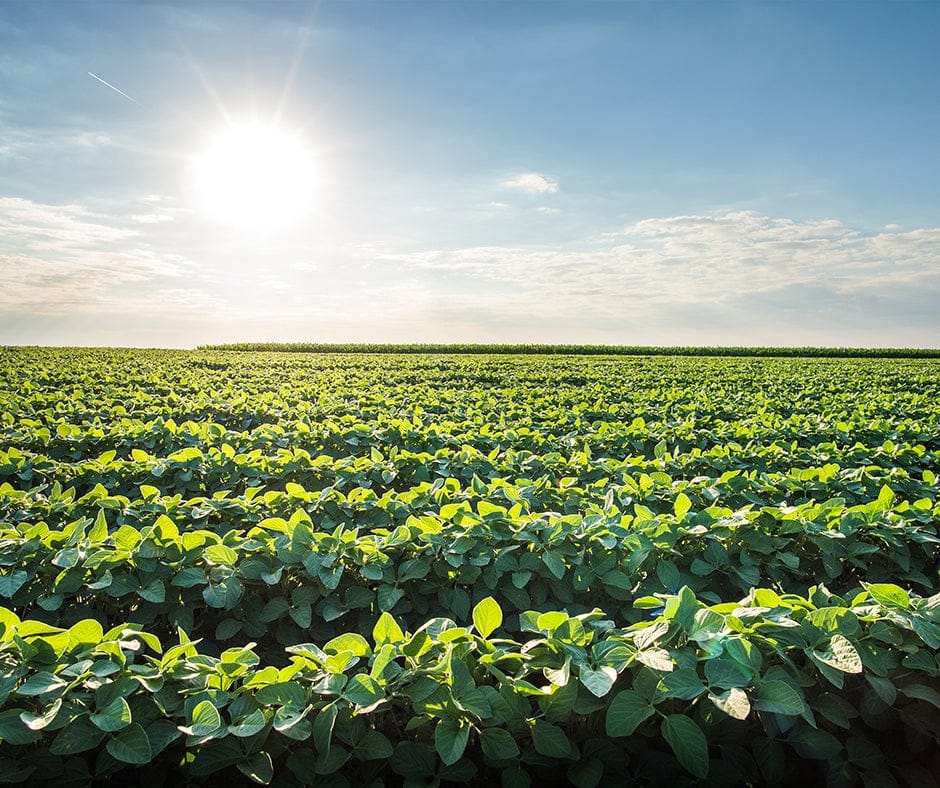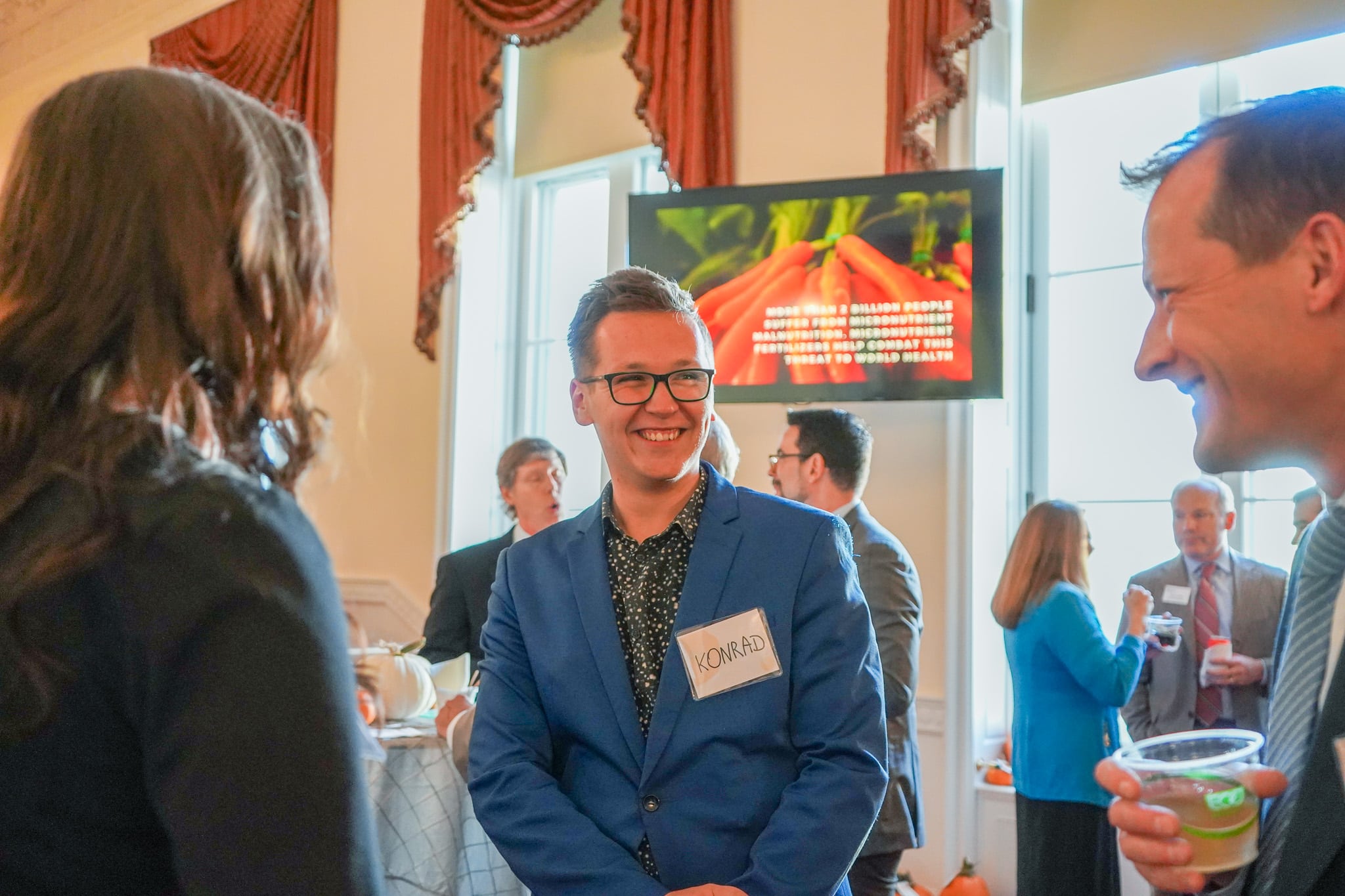This article was originally published in the May/June 2020 issue of Argus Media’s Fertilizer Focus magazine.
Based on recent discussions among members of The Fertilizer Institute (TFI) board of directors, more than 80 percent agree that sustainability and environmental impact are the issues that will most affect their businesses for the next three to five years.
“This is telling, especially since it echoes what our recent State of the Fertilizer Industry Report shows,” says Corey Rosenbusch, TFI president and CEO. “It highlights our efforts to partner with the industry to demonstrate and benchmark our progress towards sustainable development goals (SDGs).
“We’re making headway. For example, the energy used to produce one ton of fertilizer has decreased by three percent since 2017 and emissions per nutrient ton decreased seven percent in the same period, demonstrating ongoing progress with fertilizer manufacturing and use,” he adds.
Rosenbusch emphasizes that industry advancement goes beyond manufacturing. Nutrient stewardship on the farm shows measurable progress as evidenced by case studies, research and ROI documented by 90 4R Nutrient Stewardship Advocates recognized by TFI the past nine years.
It is no small commitment. Rosenbusch says the industry has committed $8.4 million to the 4R Research Fund and leveraged $8.8 million in funding for these projects since 2013.
Safety paramount
That the industry consistently achieves a safety record that is twice that of industry peers, according to data from the U.S. Bureau of Labor and Statistics, is more important now than ever.
“The pandemic caused by COVID-19 arrived in the U.S. just prior to more than 80 percent of the nitrogen moving through the supply chain,” Rosenbusch says. “During this time, employees at ports, distribution terminals, trucking and retail operations showed up to ensure nutrients were delivered to farmers. They did so because they know their employers are focused on their health and safety to ensure long-term food production.”
Rosenbusch reiterates that, despite the runs on grocery stores that occurred, the overall food supply is in good shape. It is critically important to ensure its sustainability with a strong infrastructure supported by knowledgeable professionals.
“Our industry is focused on safety, now more than ever,” he says. “Since the pandemic struck, the employees who make up safety and health teams at facilities are practically doubling as epidemiologists. It is remarkable to learn how these teams are being so highly protective of workers during these times. They remain committed to stopping the spread of any disease to ensure products get to the fields.”
The TFI team worked with government officials so that the fertilizer industry was declared an essential part of the US infrastructure and its employees are officially listed as critical workers.
“Issues surrounding this pandemic will be a focus for months ahead,” Rosenbusch says.
Collaboration key to unlocking opportunities
Despite current challenges, Rosenbusch is optimistic for opportunities that lie ahead, especially as the industry collaborates to advance SDGs and enhance environmental, social and governance impacts.
“From ResponsibleAg promoting worker and community safety to the end of the supply chain where the 4R Nutrient Stewardship Program helps ensure the sustainable use of fertilizer, the results of industrywide collaboration are being proven, Rosenbusch says. “The Foundation for Agronomic Research puts forward information through presentations and case studies that allow farmers to tell their stories with data that helps influence farmer behavior on a broader scale.”
Using data, or science to communicate is foundational to TFI partnerships that include The Nature Conservancy, Ducks Unlimited, the land grant university system and others.
“Scientists help make industry research go further,” Rosenbusch says, “Plus, they are objective voices and provide unbiased lenses for the world to understand the impact of fertilizer and what it contributes to society.”
One example is a project with Iowa State University that examines the impacts of 4R nitrogen management on crop production and nitrogen loss in tile drainage. Matthew Helmers, PhD with the Department of Agricultural and Biosystems Engineering at Iowa State University, led the project.
“This results of this project are directly applicable to growers throughout the Midwest,” Helmers says. “That’s what is critical about this partnership with the 4R Research Fund. Because of it, we were able to develop a research project that fills gaps and provides information for those in our region. The fund also supports research that benefits growers in other parts of the US and Canada.”
Educational activities convey research
Practically applying TFI-supported research is one goal of the educational programming component within the 4R Nutrient Stewardship Program. Ensuring the programs are delivered with the right content for the right audiences falls to a team of four with complementary experiences of agronomic and agricultural engineering expertise.
One example of ongoing educational outreach is TFI’s relationship with Certified Crop Advisers (CCAs).
“We partner with the CCAs to be a resource for their ongoing educational efforts,” says Laura Moody, TFI vice president of stewardship and sustainability programs. “We hosted four webinars that counted as continuing education credits. Each had 1,000 to 1,500 participants who viewed them. These focused on micronutrients and how they are applied relative to the 4Rs.
“We also prepare an article for the 4R section of Crops & Soils magazine six times a year,” Moody adds. “These articles take readily available information from peer-reviewed literature and converts in into everyday terms to that it is readily accessible for CCAs.”
TFI staff present during a variety of conferences each year. These generally cover ongoing 4R research or economic case studies. In addition, the team works with members and industry stakeholders to host session or symposia. For example, TFI staff will lead a session about 4R metrics and another that focuses on research funded by the 4R Research Fund during the 2020 Tri-Societies (agronomy, crop and soil science) meeting.
New venture seeks carbon and water credits
Helping to develop further return on 4R practices, TFI and the Economic Services Market Consortium (ESMC) announced plans to test improved nutrient stewardship as one way to increase farmer profitability through the ecosystems services market ESMC is developing with a launch goal of 2022.
“The ESMC team is working to create a marketplace where farmers can get the credits of the environmental practices they’re already doing, such as the 4Rs,” says Sally Flis, PhD, TFI Senior Directory of Agronomy. “TFI will engage some of our 4R Advocates to conduct a pilot program to test protocols in different crops and different regions.
“Our role in this pilot is to help recruit 4R Advocates who will share their data with ESMC and build out the tools to measure credits,” Flis says. “Knowing that 2022 is fast approaching, we’ll start with four farms. We can then determine what data is needed and the best ways to obtain it. We’ll then determine how to scale up data collection and create processes that help us onboard more farms in the next nine months.”
Flis will serve as a science advisor to ESMC on the project. ESMC’s science-based, outcomes-based protocols and program generates credits for soil carbon, net GH, water quality and water use efficiency.
Educational efforts, 4Rs return dividends
While TFI pursues new opportunities for the industry, its tenet that the practices it supports return dividends remains at the forefront. This is evident with the results of implementing 4R practices. One of six new case studies presented at 4Rfarming.org demonstrates the practices lowers cost per-acre production costs over time.
Management at a Florida potato and green bean farm uses multiple in-season splits for fertilizer applications, tissue testing and soil testing to monitor and adjust nutrient applications. Fertigation is now being tested to deliver in-season nutrients.
The farm has implemented intermediate 4R practices for more than 15 years. Over time, they have progressed to advanced 4R practices and are testing more changes with the help of university researchers.
Some of the 4R practices they’ve improved include:
- Use multiple nutrient sources in blends instead of relying on single forms of nutrients. They now apply muriate of potash and potassium sulfate together because one takes longer to release than the other.
- Fine-tuned application rates through split application to reduce leaching and to provide nutrients in time with the crop’s needs.
- Use a starter application at planting, followed by a dry sidedress application after emergence, followed by a liquid later in the season.
- Plant a cover crop after every crop to prevent erosion and increase organize matter for the next crop.
The yield range has remained the same at 235 lbs/cwt. Application rates for nitrogen, phosphorous and potassium remained the same for 2017 and 2018. Cost per acre improved from $324.19 in 2017 to $318.01 in 2018.
“This documentation confirms that our collaboration with the industry, our university partners and industry allies are delivering economic and environmental benefits to farmers and their communities,” Rosenbusch says. “This aligns with long-term goals.”

